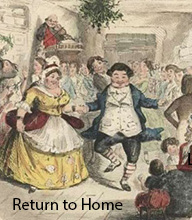

![]()
For women, you might choose a skirt, (plain or patterned fabric - no satin or silk) with a blouse (white or cream - no pattern). Dresses are defined as being 2 pieces, a bodice and a skirt all of the same fabric, and should be simple, with minimal trim.
Back in the day, people wore a lot more clothing than we wear now. Remember, England is exceptionally cold in the winter. Typically there were 7 or 8 layers of clothing.
The first layer would be their drawers, which were made of cotton and would normally go to the knee or to mid-calf.
The second layer would be the chemise. This was nothing more than a cotton night gown that would be worn under the corset to keep it from becoming soiled by bodily oils and from pinching the lady.
The third layer was the corset. Corsets were not used to get the very thin waistline, or to give a woman a busty boost. They were simply designed so that it would give a smooth line from the waist to the bust of the woman. They were constructed of whale bone sewn into cotton. There were hook and eye clasps on the front and it laced up in the back. The corset originated in France. The fourth layer would have been the corset cover or camisole which of course was made of cotton. It prevented the color from your dress from rubbing or fading onto the corset.
Corsets cannot be laundered, so you really have to try your best to keep them clean.
The fifth layer was the under petticoat, normally white, that was made of cotton. It was worn under the hoop skirt to keep it from getting dust and dirt under it and was worn to preserve modesty. The drawers were split and any tilt of the hoop or gust of wind could reveal more than she might wish to be seen.
The sixth layer was the hoop skirt. Hoop skirts were sometimes made of whale bone sewn into cotton, but were mainly constructed out of steel covered by cotton, making a simple caged crinoline. This is what gave the southern belles their bell.
The seventh layer were the over petticoats. Normally, during the spring and summer a woman would only wear two of them. But during the Fall and Winter months would wear anywhere from 4 to 5 at a time. The purpose was to cover the hoop skirt so that the bones wouldn’t show through.
Finally, add the blouse or bodice and the skirt.
Every lady should expect to have several essential elements:
· A corset
· Two undershirts to wear under your corset (one for Saturday and one for Sunday)
· A hoop skirt or a "crinoline" or quilted petticoat
· Drawers (to the knee or mid-calf)
· A dress
· Gloves
· A good pair of boots/shoes that are period and comfortable enough to dance in all day
· A bonnet or hat
· A shawl
Additionally, you may also want to have several other pieces including multiple undershirts or shirts to go over your corset and under your dress. It’s no fun washing your dress on Saturday after fair, and dancing is sweaty business, so deodorant and fresh undershirts are key. Also, a timepiece (for ladies search pendant watch at Amazon.com) can be very handy. Wrist watches are not period and are not allowed.
A corset is essential to creating the proper lines. Timeless Trends offers an inexpensive but well-made off-the-rack corset. Select a size that is 3-4 inches smaller than your natural waist. Dark Garden in San Francisco offers high quality custom and ready-made corsets. A corset is a good place to start your costuming.
A note on hoops vs. petticoats: Ladies, you are not required to wear a hoop at Fezziwig’s. Multiple petticoats are a perfectly acceptable alternative to the hoop, and many dancers prefer the petticoat option, especially for the athletic dances of the 1840’s and ‘50’s. Other dancers prefer the air space created under a hoop skirt. If you do wear a hoop, be sure to avoid the giant hoops of the Civil War era. Smaller hoops are more becoming to most women and more considerate to your fellow dancers. We recommend a hoop circumference of 95 to 110 inches.
You will only need one dress for the run of Dickens Fair. We recommend choosing a washable fabric as the Cow Palace is dusty and dirty. Also, undershirts (under your corset and/or between your corset and your dress) are key to keeping your dress smelling fresh and clean. Plan to have at least 2 undershirts: one for Saturday and one for Sunday. You really must wash these weekly. It’s all well and good to look period, but we really don’t want to smell period.
If you do choose to wear more than one costume at Dickens Fair, both or all of them need to be formally approved by Fair’s current Costume Director.
Dresses can be found ready made from several online retailers.
If you are looking for a list of current online retailers, please email the cast list or contact a veteran for recommendations.
We highly recommend getting a pair of Justin Lacers for boots. Take the kiltie off the front and you've got lovely (mostly) period boots in a large range of colors. You may be able to purchase these gently used at a huge discount on eBay. The bit that isn't period is the speed lace pegs on the upper half of the boot. If you're feeling ambitious, you can change those out for normal grommets or get a cobbler to do it for you. You will be able to pass costume approval without this change. These are the most comfortable shoes we've found for a full day of dancing.
Ladies, your hair must be up. At the minimum, it should be pulled into a ponytail and pinned into a bun. You may slick it all back and glue it down, but you may not have it loose and free.
Traditional hair styles were generally parted down the center.
Please pin down all stray hairs. Bobby pins are your friend.
We recommend reviewing images of hairstyles online or in period movies to get ideas. Be aware, though, that many period movies, even much admired films, show the heroines with loose, modern shoulder length hair or long hair tied back with a ribbon. Neither style is appropriate for Victorian ladies over 14.
Organized curls are fine. Hair worn loose and flowing is not! Hair must be done before opening.
We strongly recommend doing it before you leave the house as it is much easier to do with a mirror. Side curls and back curls, both "sausage" and "banana" styles, are permitted, but don't bring your curling iron to Fair. There is no suitable outlet for it. Additionally, remember that your hair must be able to withstand a full day of dancing.
A day cap should cover the hair while "indoors" at the Fezziwig warehouse. One should have a bonnet, gloves and shawl when venturing forth on the streets of London
Finally, there are a few things that will not be tolerated. Zippers should never be visible. They were not perfected until the early 20th century and have no place on our stage. Also, ladies, you simply must wear drawers. Showing so much leg in a polka just shocks our sensibilities! The hem of your skirt must not touch the floor; you don't want to risk tearing it on the dance floor!
On the other hand, skirts should not be more than 3-4 inches off the ground. The idea is that you should look like you're floating and don't really have legs. You certainly shouldn't be showing off your legs or (heavens forfend!) your knees. This is a party at the office. We are not at a ball. Please wear daywear not ball gowns.
In other words, your gown must have long sleeves and a reasonably high neckline and must certainly not reveal cleavage, no matter how lovely it is. And please avoid bright lip colors (especially dark red). We are respectable people, unlike those trashy sorts on the other end of town.
That said, discreet make-up is certainly permitted (e.g., a non-bright lip color, blush, powder, brow pencil and make-up base). Fair's Costume Director has even suggested using a base one shade darker than your usual color as an antidote to the anemic look of much of the lighting at Fair. Eye make-up, however, needs to be very discreet or you'll end up looking like a Bond Girl instead of a Dickens heroine! Only ultrafashionable 19th century women like the Empress Eugenie wore eye-liner and even she used it subtly. The Fair costume mistress has emphasized that makeup should be natural looking.
Costume colors to avoid: For theatrical reasons, neither black nor white should be the principal color of your costume. Avoid pastels and select warm winter colors and jewel tones instead.
Remember that Dickens Fair management's goal is for the Fair to look like a Christmas card come to life.
Jewelry: Less is more for dancers. Brooches and cameos, watch necklaces, and simple earrings are fine. Bracelets can be hazardous on the dance floor, and necklaces with precious gemstones are inappropriate for a simple party like the Fezziwig’s. Above all, please don’t wear anything valuable to Dickens Fair and please don’t wear family heirlooms. Leave Aunt Mathilda’s 100 year old garnet brooch at home.